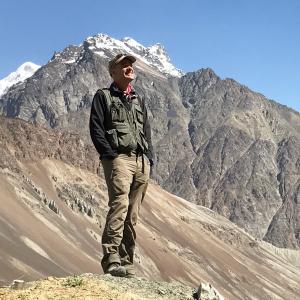Having visited the 10th century Georgian church that is situated, rather surprisingly, right next to our beautiful rural guesthouse in the village of Barhal, we set off on our mountain walk. The sky was clear, the air fresh and the track in front, both firm and clear. This was a land of primary colours; bright red rosehips standing out against the lime green elm, which in turn melted into the emerald spruce that climbed up the steep hillside only to fade into the indigo sky. Here in Turkey’s far northeast the mountains are as picturesque as any I’ve seen, and it was a joy to be walking among them.
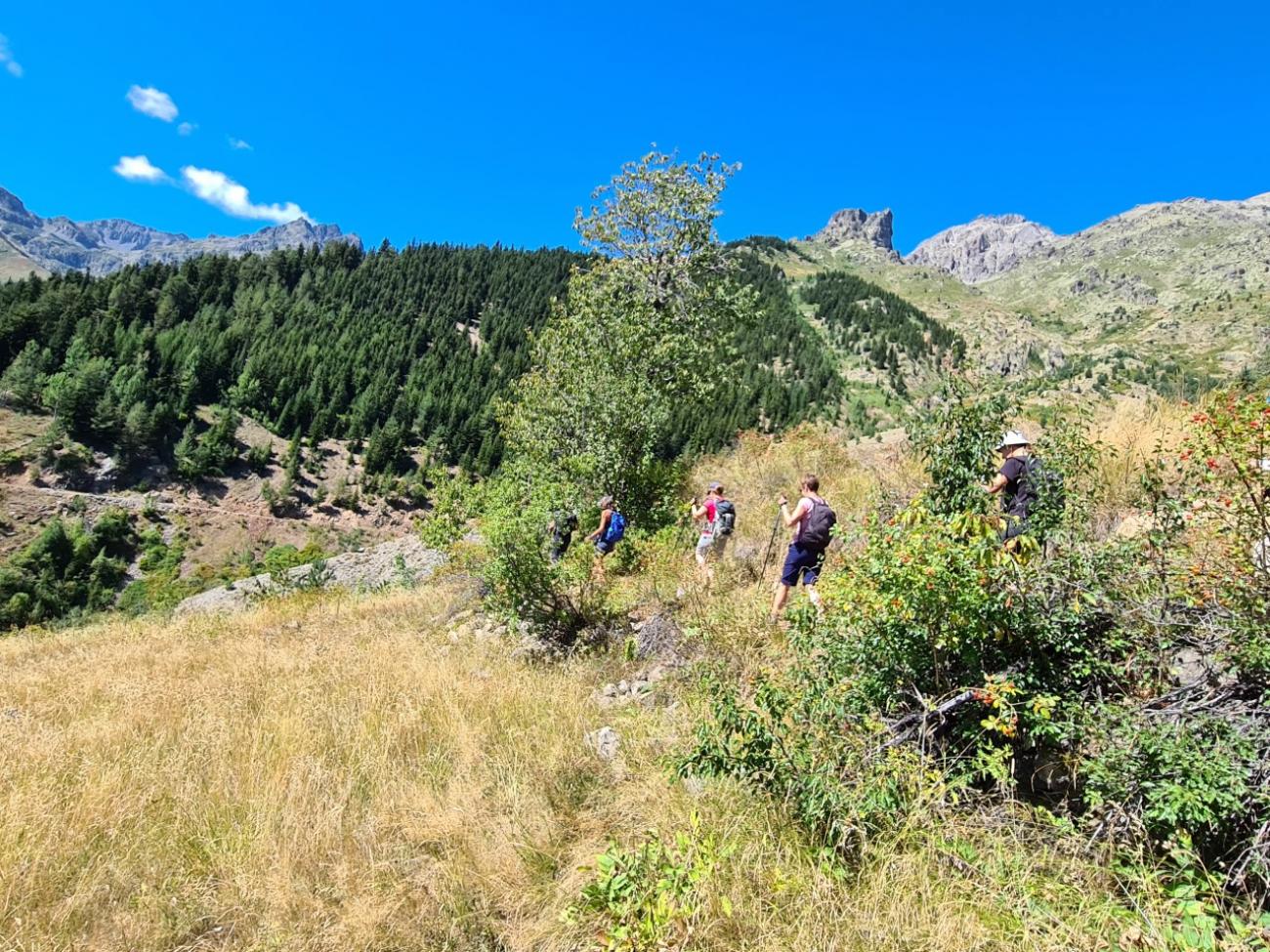
In the last three days we have moved from Kars, north towards the Georgian border and then west into the verdant hills that make up the Kaçkar mountains. With an equal mix of walking and culture we’ve done three great hikes, crossed Moghul bridges, explored the Black Lake and visited three ancient Georgian churches. Travelling in this region you quickly realise just how much history has been played out here. Through the ages most of Asia’s great powers have passed this way – Moghuls, Persians, Turks, Russians and many others I hadn’t even heard of – and all have left their mark. But perhaps the Georgians are the most understated. The church complexes, or monasteries, they built between the 10th to 12th centuries are seriously spectacular; black if made of basalt, grey if made of granite and gold if made of sandstone. Like in Ani, each are constructed in the shape of a cross, with a towering naïve and squat spire. Some are ruins, others have been renovated; all are hugely impressive.
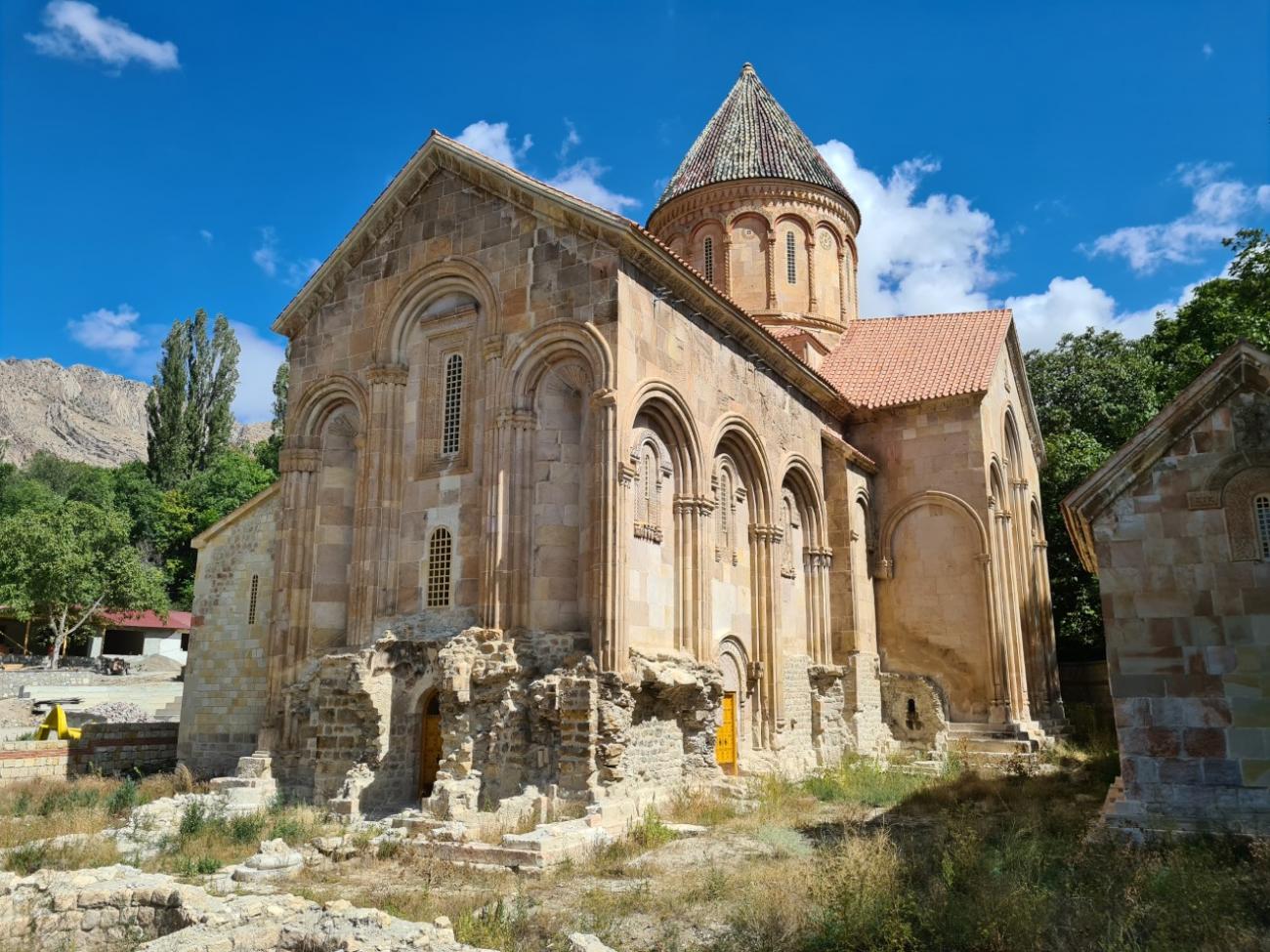
And so today we walked along a mountain track. On either side hay meadows, cleared of their crop, stretched away towards steep sided cliffs above which sat a small hamlet of dark wooden dwellings. A hawk drifted by, looking for its breakfast, butterflies crossed our path, and a narrow brook gurgled below. When we reach the hamlet, we were set upon by a man with long grey hair. Gesticulating wildly, he called us over and insisted we sat outside his tiny home. A moment later he emerged with a Turkish bag pipe or tulum – meaning ‘sack’ – and having taught us the chorus to a particular song, started to play and sing. He gave us hazelnuts and an axe to break the shells. He grabbed some of the group and made them dance with him. And then we were on our way.
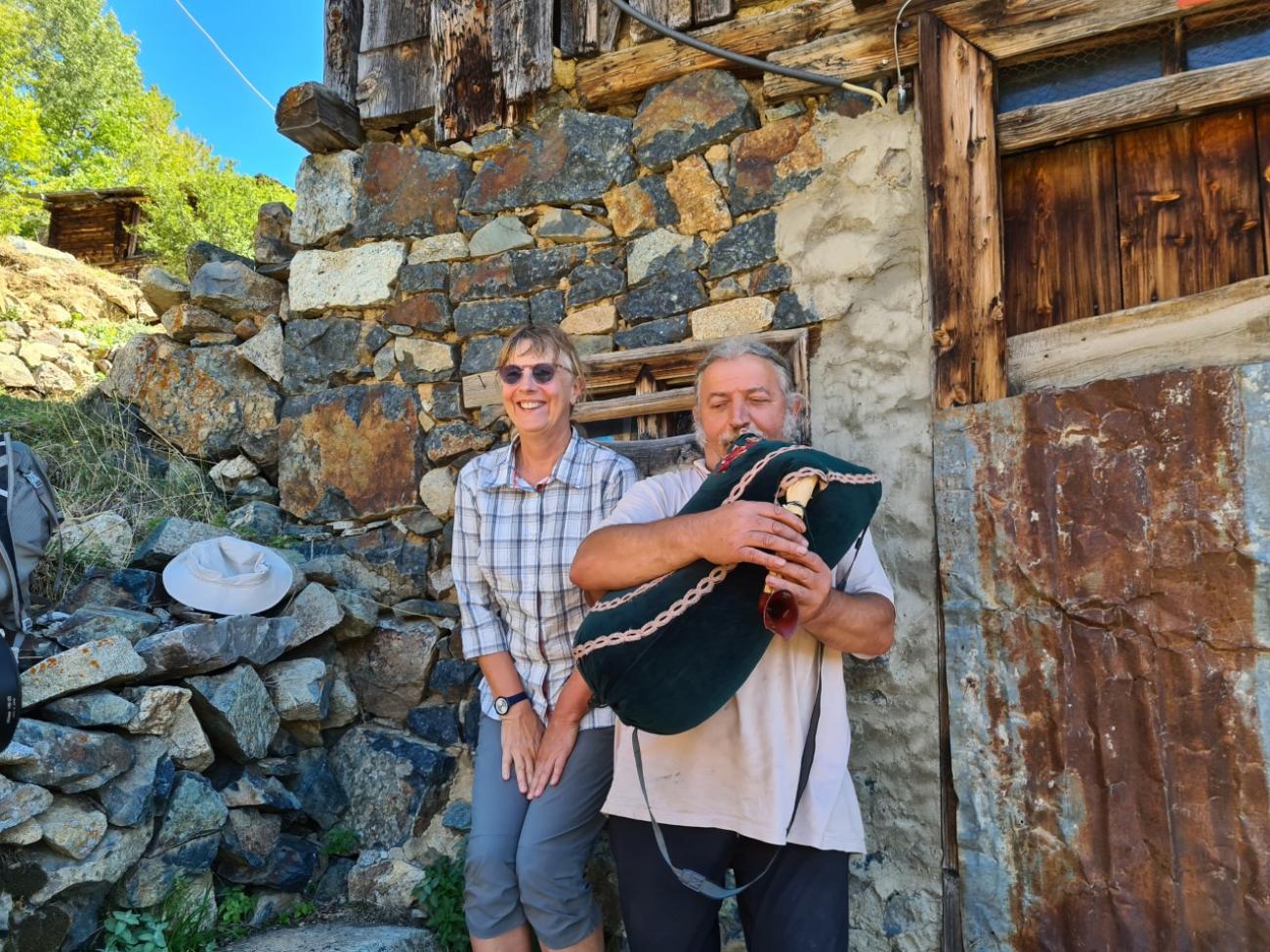
From here we walked down through orchards of apples, pears and walnuts into another tiny hamlet. Before us a young man herded two cows and three sheep between the houses. Most of the houses were made of wood, long trunks stacked one on top of the other in a very ancient manner. From their balconies hung chunks of meat drying in the sun. There were haylofts, stacks of firewood, conical baskets made of birch; the only nod to the modern world, were the house’s corrugated iron rooves. We sat by the village spring and ate our lunch. An old man gave us pears from his tree.
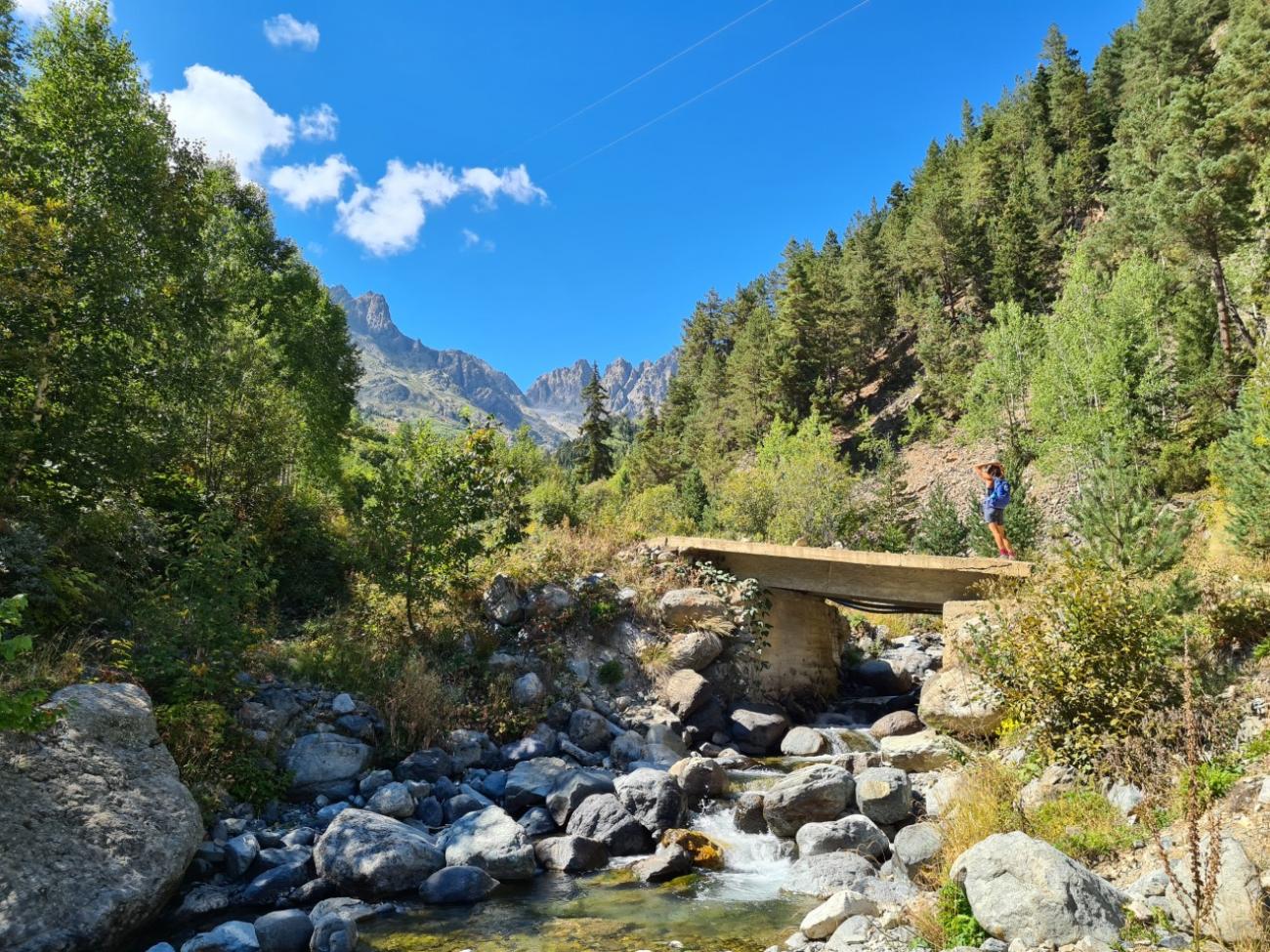
And as we walked back to our guesthouse, I realised that this is what I had missed. Being in a remote part of the world, where landscapes and cultures are so different from my own but where the joy of these things and human interaction means so much. Breathing in the fresh mountain air, cooling off in the chilly mountain stream, laughing with a local eccentric and eating fruit given to us by a total stranger, is what travel is all about. I hope we don’t forget that.
